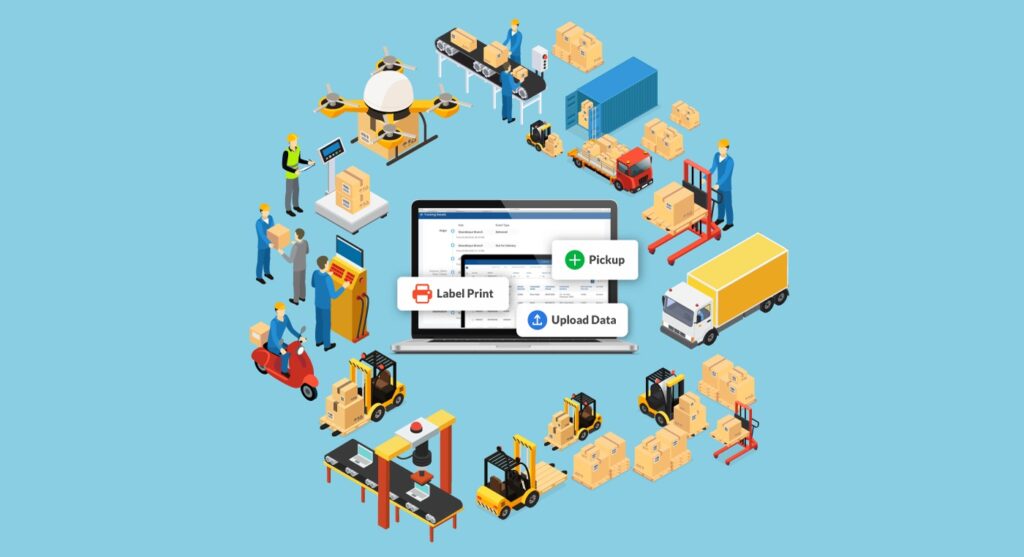
Data science may seem complex and mystical, but it doesn’t have to be! This comprehensive guide breaks down the essentials for aspiring data scientists and those curious to unlock the power of data. We’ll explore essential concepts, tools, processes, and real-world applications in an easy-to-understand, conversational style.
What Exactly is Data Science?
In simple terms, data science course is extracting valuable insights from raw data. It combines aspects of statistics, programming, machine learning, and visualization to achieve specific goals like predicting outcomes, optimizing systems, or identifying patterns.
Data scientists are like explorers venturing into dense jungle terrain of hidden treasures. By leveraging the right tools and techniques, they can uncover game-changing insights to drive transformative change.
The critical promise of data science boils down to this:
Harnessing data effectively can solve problems, reveal opportunities, and provide a competitive advantage.
Understanding this basic premise is crucial for appreciating the immense potential of this rapidly evolving field.
The Data Science Toolkit: Key Disciplines
Data science course draws from diverse disciplines. While an exhaustive discussion is beyond this guide, we’ll highlight the most essential areas:
Statistics and Mathematics
This forms the bedrock as it provides tools for deriving insights from data. Key concepts include:
- Descriptive statistics: Using summary metrics to describe and understand data distribution.
- Inferential statistics: Making predictions about large populations using small samples. Includes hypothesis testing, correlation analysis, etc.
- Machine learning algorithms: Using computational methods to reveal hidden predictive patterns within data without explicit programming.
- Data modeling: Developing abstract representations using mathematical formulations to explain data behavior. Helps data comprehension.
Understanding fundamental math and stats clears the fog around how models work their magic!
Programming Languages
Data rarely arrives clean and orderly. Programming proficiency is essential for data-wrangling tasks like:
- Importing/exporting data from different sources
- Cleaning messy, inconsistent real-world data
- Merging, transforming, and formatting data for downstream use
- Exploratory data analysis using code instead of GUI software
Python and R are popular choices thanks to extensive libraries suited for data tasks. Other languages like Scala, Java, and Julia also see use.
Machine Learning (ML)
This discipline enables computers to automatically learn and improve at tasks using data – without explicit programming. Based on the problem and data type, data scientists choose and fine-tune appropriate ML algorithms.
ML allows insights like predicting patient outcomes, forecasting stock performance, or classifying emails as spam to be revealed. It provides the predictive muscle driving modern AI innovation.
Data Visualization
Visual representations allow faster interpretation of complex data. Adequate data viz conveys insights clearly and compellingly to diverse stakeholders. Data scientist course in Pune use tools like Tableau, Power BI, MATLAB, and more to illuminate data patterns.
The Data Science Project Lifecycle
While data science leverages fancy tools, it’s powered by a structured process targeting specific business goals. Understanding this end-to-end flow removes more mystique.
Let’s break down the key phases:
Business Understanding
This crucial first step entails clearly defining the problem you want to solve or the question you want answered using data science.
For example:
- Predicting customer churn
- Forecasting product demand
- Detecting financial fraud
Such clarity of purpose guides all downstream efforts.
Data Collection
With the problem defined, relevant data gets collected from suitable sources. Data may involve:
- App/website activity logs
- Sensor readings
- Banking transactions
- Satellite imagery
- Electronic health records
Data Preparation
Real-world data tends to be dirty, inconsistent, and disorganized. Using programming languages, data scientists invest substantial effort into:
- Importing data from diverse sources
- Fixing errors, outliers, and missing values
- Converting formats for consolidation
- Combining disparate datasets
- Structuring and standardizing messy data
Such data wrangling transforms unreliable raw data into high-quality, analysis-ready datasets.
Exploratory Data Analysis (EDA)
EDA allows initial investigation into prepared datasets using statistical summaries and visualizations.
This helps:
- Understand data characteristics
- Assess data quality issues
- Discover patterns, relationships, and anomalies
- Form hypotheses for further analysis
EDA ensures you squeeze all insights from data before applying complex models.
Model Development
This exciting phase involves designing and training ML models to unlock predictive insights per project goals.
Steps include:
- Selecting suitable algorithms
- Training models on prepared data
- Assessing model performance through testing
- Fine-tuning models by tweaking architectures and parameters
- Comparing alternative models for best outcomes
Creativity, experimentation, and tenacity are vital to developing high-performance models.
Model Deployment
Once satisfactory models are developed, they integrate into business systems and processes to drive decisions and outcomes.
For example:
- Fraud-detection model connected to banking apps
- Recommendation model powering e-commerce portal
- Churn prediction model driving customer retention campaigns
Appropriate deployment unlocks lasting business value from data science efforts.
Monitoring and Maintenance
Deployed models decay in performance over time due to changing real-world conditions. Continuous monitoring identifies deteriorating models to trigger:
- Re-training models on the latest data
- Retiring outdated models
- Developing enhanced models
- Refining overall system
Vigilance ensures enduring value derived from data science investments.
This simplified walkthrough illuminates the methodical process from ambiguous business problems to high-impact solutions.
Data Science Powering Business Innovation
Beyond the concepts and process, seeing real-world impact dispels the remaining haze around data science’s immense potential.
Data science drives transformation across diverse domains like:
Precision Medicine
Analyzing patient clinical records, genetics, and lifestyle data has enabled the following:
- Earlier disease detection
- Personalized care optimized for individual traits
- More accurate prognosis and survival estimates
- Targeted enrollment for clinical trials
Algorithmic Banking
Banks use data science applications for:
- Detecting fraudulent debit/credit card charges, saving billions in losses
- Granting loans by predicting income, default risk, and creditworthiness, broadening access
- Automating customer service through chatbots and recommendation systems
- Optimizing portfolios, capital allocation, and risk management
Data unlocks more reliable, accessible financial services.
Retail and E-commerce
Online stores thrive on data science for:
- Recommender systems (like Amazon) offering personalized suggestions driving more conversions
- Inventory and pricing optimization based on demand forecasts and competitor data
- Intelligent customer segmentation for targeted sales campaigns and promotions
- Supply chain optimization reducing overstock/understock
Data helps enhance user experience and retailer profits.
These snapshots provide a glimpse into data science’s real-world impact.
Getting Started with Data Science: Tips for Beginners
The demystification so far gets you excited about exploring data science. Here are some tips to guide the following steps:
- Pick an industry: Identify domains aligned with your interests – finance, healthcare, retail, etc. Seeing tangible applications will accelerate learning.
- Learn using real datasets: Toy examples have limits. Working with real-world datasets reveals practical challenges and keeps motivation high.
- Start simple: Tackle basic, explainable models before complex neural networks. Linear regression, random forests, and cluster analysis make great beginnings!
- Practice data intuition: Beyond coding proficiency, cultivate instinct for asking the right questions, spotting patterns, and articulating insights from data representations.
- Embrace experimentation: Data science involves trial and error. Test creative ideas without fear of failure. Evaluate results empirically to guide the next steps.
- Upgrade skills continuously: Given the pace of progress, learning must continue through online courses, certificate programs, workshops, and more.
While individual starting points differ, sustainably advancing data science skills and intuition takes perseverance and grit.
The Exciting Road Ahead
This guide clarified data science’s core concepts while highlighting promising real-world applications. Rapid innovation implies an exciting road ahead as data continues permeating all sectors. While early progress promotes optimism, data science remains in its early stages, much like aviation in the early 20th century. We are only scratching the surface of what’s possible.
But you need no longer view this landscape as impenetrable. Equipped with demystified fundamentals, consider developing competitive data skills as a catalyst for participating in an AI-powered future brimming with possibilities. Crack open a dataset and start honing your data exploration chops one insight at a time!
ExcelR – Data Science, Data Analyst Course Training
Address: 1st Floor, East Court Phoenix Market City, F-02, Clover Park, Viman Nagar, Pune, Maharashtra 411014
Phone Number: 096997 53213
Email Id: [email protected]




